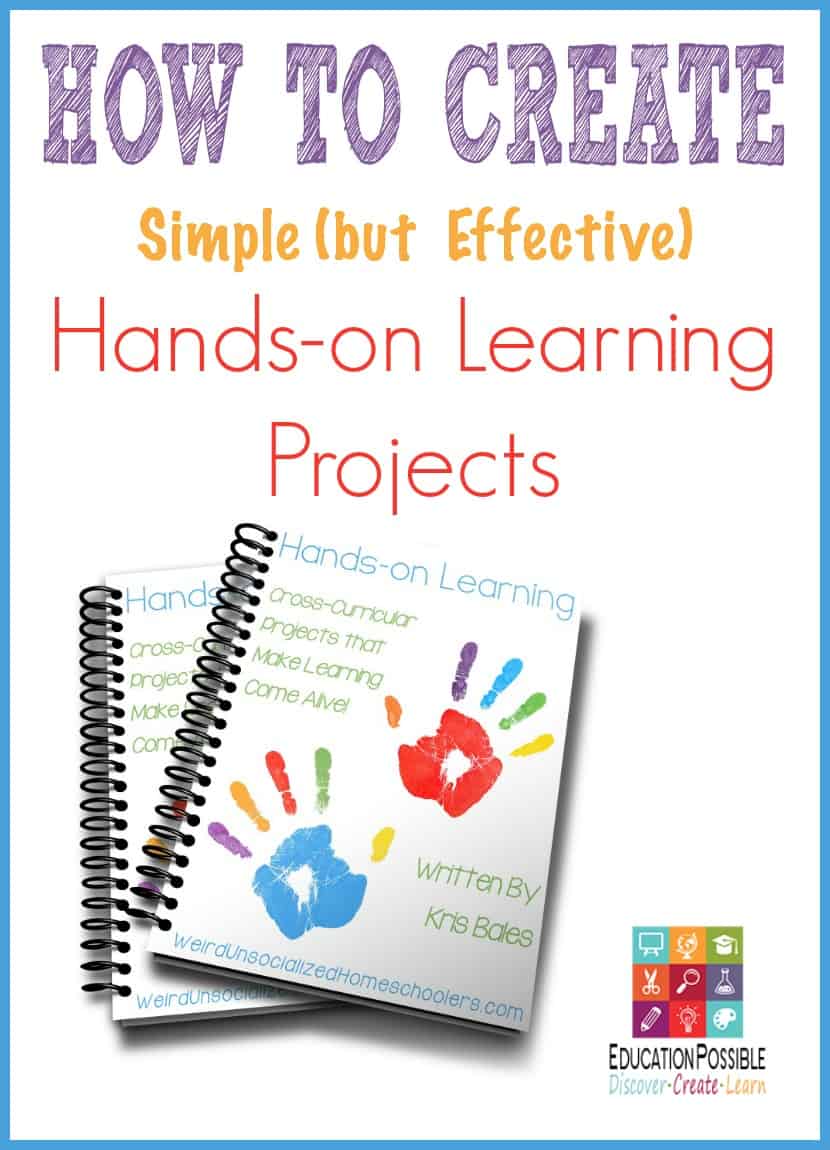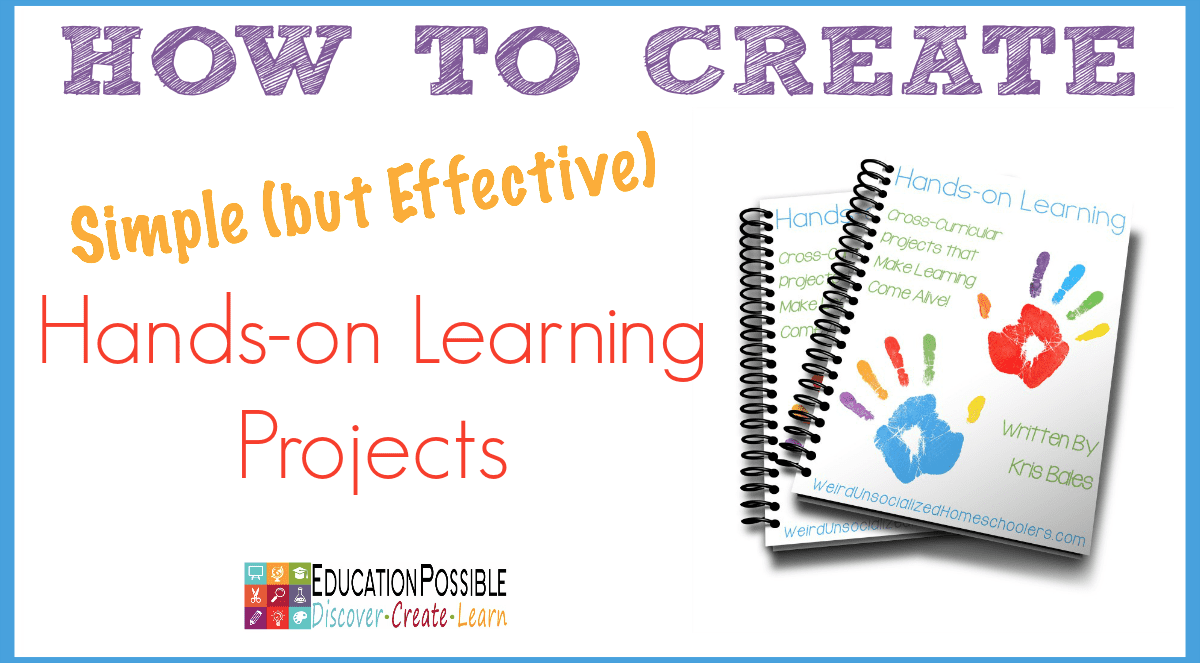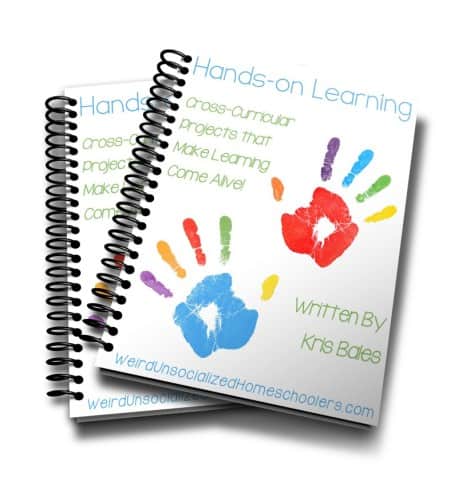How To Create Simple, But Effective, Hands-on Learning Projects
Do you agree that kids learn more and understand better when they DO something, rather than just hear or see it?
Would you like to include more hands-on activities into your homeschool, but you don’t know how to plan them?
As a practical, no-nonsense homeschool parent myself, I have always known that my kids learn and retain information much better when we add hands-on projects to our lessons. These activities help them try out their ideas, use more of their senses, and feel more involved in the learning process.
The biggest problem for me, however, is that I’m not the most creative person. It’s often hard for me to think of unique project ideas. I do much better when I have some general ideas I can use as a starting point and then customize them to fit our current lessons and learning needs.
My other concern for hands-on projects is time. I want to create projects that help with learning, but I don’t want to spend a lot of time (or money, or resources) creating an elaborate activity each week. Especially now that my kids are getting older I’m looking for activities they can plan, execute, and learn from more independently.

Let me share one of my favorite tools for how to create simple, but effective, hands-on learning projects for our homeschool. I’m talking about a practical guide from one of my favorite homeschool bloggers – Hands-on Learning: Cross Curricular Projects that Make Learning Come Alive! By Kris at Weird Unsocialized Homeschoolers.
Hands-on Learning: Cross Curricular Projects that Make Learning Come Alive!
In the introduction to this helpful e-book, Kris addresses some common obstacles to hands-on learning such as planning, lack of ideas, and feeling uninspired. Next she offers practical tips for clearing the hurdles to hands-on learning and even speaks directly to those of us who are not super creative!
Rather than list 100’s of project ideas to cover traditional subjects, this book helps you design hands-on learning activities to fit your family’s specific needs based on these popular and effective learning types:
- Projects
- Games
- Learning Centers
- Presentations
Projects – This is one of the most popular hands-on learning activity types. Projects can be used with almost any subject and can include things like building models, creating dioramas, baking, drawing, sewing, etc. Detailed instructions are included for:
- Papier-Mache Model – sample project: Earth’s Layers
- Salt Dough Map – sample project: Italy
- Cookie Dough Map – Sample project: Map of the United States
- Ongoing Studies – Sample project: Fifty State Fridays
Games – Kids love games because games make hands-on learning a lot of fun. Games are simple to create and make fact practice/review more entertaining than traditional methods. Find many suggestions for turning these favorite games into learning activities:
- BINGO – use to review math facts, words, roman numerals, parts of speech, history facts, and more.
- Memory/Matching – match math facts to their answers, people to events or dates, vocabulary terms to definitions, etc.
- Go Fish – reading and fact practice
- Board Games – repurpose board games by asking kids to answer a question correctly in order to take a turn.
Learning Centers – Learning centers are a grouping of tools to facilitate learning. Examples include:
- Writing Center – include writing activities, resources, tools, and assignments tailored to your child’s skill level and individual needs.
- Mini-Offices – a portable learning center to reinforce math and writing skills.
Presentations – By creating and sharing a presentation board kids can show family members what they have been learning in school. Sample projects include:
- Around the World Day – Learn about different places and cultures by researching and sharing facts, maps, reports, etc.
- Night at the Museum Party – Costumes, castles, cakes, swords, and shields make this an unforgettable display!
Additional Materials – For even more hands-on learning ideas you will find links to helpful websites, recipes, books, blank game boards, and more.

Why We Recommend Hands-on Learning: Cross Curricular Projects that Make Learning Come Alive?
Basic Starting Point to Spark Ideas
As I said earlier, I’m not the most creative person, but I can take a general idea and figure out how to customize it for our learning needs. We love to study geography, and my son loves maps. Using Kris’ suggestions we created cookie dough maps to go along with our Colonial American history studies. We even figured out how to make continent maps out of Rice Krispy cereal – talk about a tasty and educational project!
Games Make Learning Fun & Memorable
Every year I try to find new ways to encourage my kids to select a wider variety of books to add to their summer reading list. I figured out how to turn a simple game like BINGO into a creative summer reading activity. I completely agree with Kris when she says Bingo is always a favorite because it’s “fun, easy to incorporate, and incredibly versatile.”
How to Cover Topics That Don’t Fit into a Regular School Day
Kris’ suggestions for “ongoing studies” are right on point! What if there is a topic you really want to include in your homeschool but it doesn’t neatly fit anywhere? Examples might include learning about states, countries, animals, inventors, etc. Next year we are going to use this approach for cultural geography – we plan to study a new country each month, incorporating activities once a week to learn about food, art, customs, famous people, etc. We can’t wait to get started!
Where can you find Hands-on Learning: Cross Curricular Projects that Make Learning Come Alive?
This 54-page e-book is available for immediate download and use by visiting:
Weird Unsocialized Homeschooler Hands-on Learning
You can even view sample pages before you buy to see these interesting activities for yourself.
We hope this fun and affordable book helps to spark ideas for simple and effective hands-on learning activities for your family.
Once you check out the e-book we would love for you to stop back and share a comment and tell us about the projects you create for your homeschool!
